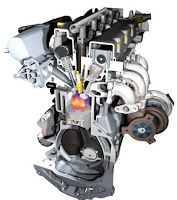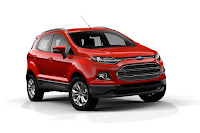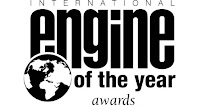These engines follow the modern trend of ‘downsizing’, manufacturers are developing smaller capacity engines
with fewer and smaller cylinders and yet
develop similar or greater power outputs to larger capacity engines.
Ford
Motor Company is the car manufacturer responsible for
the new EcoBoost engine project. This range of new petrol engines
offers more economy, more power and due to their high-efficiency, less impact on the environment.
These new EcoBoost engines have many
advantages for example, lower internal friction, lower mechanical loses and due
to their compact dimensions and they are lighter, reaching optimal operating
temperature quicker than traditional engines.
Ford
technicians have managed to achieve a 20% reduction in fuel consumption and a
reduction in CO2 emissions by 15%.
Ford first introduced the EcoBoost engine in the United States of
America in the F-150 pickup. The new engine was a 3.5 litre V6 which
developed more than 300bhp, the improved efficiency of this engine decreased
fuel consumption and emissions compared with the previous V8
engine. This engine has proved extremely popular with Ford selling
500,000 vehicles equipped with this EcoBoost engines.
 |
| Pickup F-150 and its Ecoboost engine |
European Fords are equipped with a range of 3
& 4 cylinder Ecoboost engines, ranging from a 1 litre
100HP to a powerful 2 litre 250HP. Ford plan to extend this
range of engines in 2015 to include a new four cylinder 2.3 litre
engine that Ford plans to fit in the sports Mustang.
 |
| Left: 3 cylinders 1.0 l engine; Right: 4 cylinders 2.3 l engine |
The 1 litre 3 cylinder engine is produced in Germany, Romania and
China. The 1.6 litre engine is manufactured in Fords Bridgend plant in the
United Kingdom and the 2 litre four-cylinder engines are produced in the
Almussafes plant in Valencia, Spain.
In 2012 Ford produced 65,000 EcoBoost engines a month and success of these engines resulted in Ford increasing global production to 100,000 units a month. In 2013 EcoBoost production reached two million units.
The 1 litre version has been awarded the “International Engine of the Year” for three consecutive years for quality, performance, refinement and efficiency, etc. These engines are recognised as the most accomplished engines on the market.
In 2013 Daimler, Renault-Nissan and Ford reached an agreement from which all three manufacturers benefitted from the EcoBoost project. Daimler started to fit the EcoBoost engine in its access models, Renault took advantage of its large scale production capacity and Ford acquired important information on petrol stratified injection charge in order to comply with the strict Euro6 anti-pollution standards.
These engines are named accordingly to the vehicles that they are fitted in. The range includes 1.0 litre 3 cylinder engines, 1.6 and 2.0 litre four cylinder engines.
|
||||||||||||||||||||||||||
 |
||||||||||||||||||||||||||
|
||||||||||||||||||||||||||









No comments:
Post a Comment